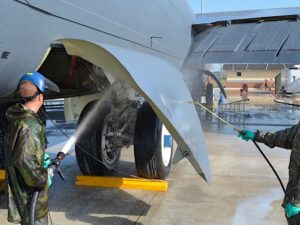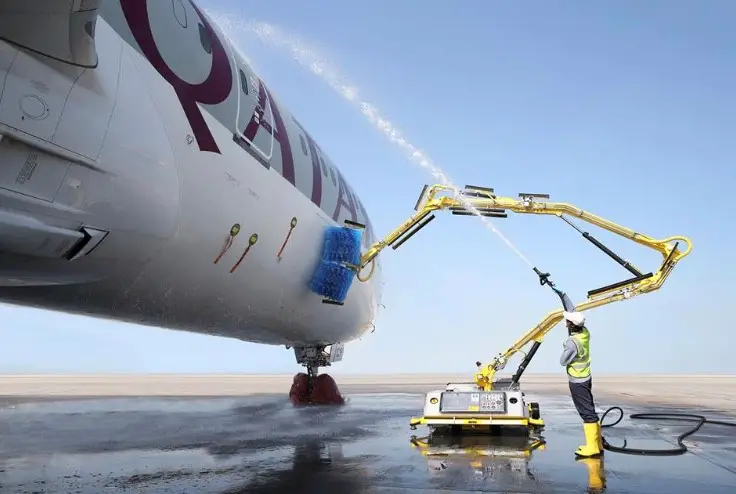Introduction to the importance of Airplane Maintenance
- Welcome aboard whether you are a frequent flyer or someone who simply marvels at the wonders of aviation it no secret that airplanes are truly engineering marvels from their sleek designs to their powerful engines these flying giants captivate us with every takeoff and landing
- In this blog post well dive into why washing an airplane is not just a superficial act but rather an essential step in ensuring safe and efficient flying Well explore how dirt and debris can affect the performance of an airplane
- Discuss the dangers of neglecting regular washing provide guidelines for frequency outline the benefits of frequent washing and even walk you through the steps involved in a proper airplane wash
- So fasten your seatbelts as we embark on this journey to discover why airplanes must be washed as frequently as every 7 days Its time to uncover the hidden secrets behind sparkling wings and gleaming fuselages that keep our skies clear and our flights smooth operation.
Explanation of How Dirt and Debris Can Affect the Performance of an Airplane
Airplanes are complex machines that rely on their performance to ensure safe and efficient flying however the accumulation of dirt and debris on an airplane can have a significant impact on its overall performance
- When an airplane is covered in grime it disrupts the smooth flow of air over its surfaces this disruption creates drag which directly affects fuel efficiency and speed In turn this leads to increased fuel consumption and higher operating costs for airlines
- Moreover dirt build up can also affect the functioning of critical components such as sensors and instruments These components play a vital role in ensuring accurate readings for various systems like navigation altitude control and engine performance monitoring
- A layer of dirt or dust can interfere with these readings potentially leading to inaccuracies or malfunctions
- In addition to affecting aerodynamics and instrument accuracy debris on an airplane can also pose safety risks Foreign object damage (FOD) is a serious concern in aviation caused by loose objects getting sucked into engines or blocking crucial areas like pitot tubes used for measuring airspeed
- Regular washing helps remove potential FOD hazards from both external surfaces as well as hidden crevices
In conclusion keeping airplanes clean through regular washing not only enhances their appearance but also ensures better aerodynamic efficiency accurate instrument readings reduced maintenance costs due to FOD prevention all contributing towards safer flights for passengers and crew alike

Credit: Riveeraviation
Frequency Guidelines for Washing Airplanes
When it comes to keeping airplanes in top-notch condition regular washing is an essential part of the maintenance routine But just how often should airplanes be washed The answer lies in a set of frequency guidelines that take into account various factors
- First and foremost aircraft manufacturers recommend that airplanes be washed at least every 7 days This ensures that any dirt debris or contaminants accumulated during flights are promptly removed By adhering to this guideline operators can prevent the build-up of grime that could potentially affect the performance and safety of the aircraft
- However certain external conditions may warrant more frequent washings For instance if an airplane operates in areas with high pollution levels or saltwater exposure (such as coastal regions) it may require washing every 3-5 days to mitigate corrosive effects
- Moreover operators must also consider operational requirements and visual appearance when deciding on wash intervals Airlines often prioritize cleanliness for branding purposes and passenger satisfaction
- Maintaining a consistent schedule for airplane washing helps ensure safe and efficient flying operations while prolonging the lifespan of critical components
Benefits of Frequent Airplane Washing
Regularly washing airplanes is not just about keeping them looking clean and shiny There are numerous benefits to be gained from frequent airplane washing that go beyond aesthetics
First and foremost regular cleaning helps to maintain the performance of an aircraft Dirt grime and debris can accumulate on the surface of the plane over time this build up can negatively impact aerodynamics by increasing drag which in turn reduces fuel efficiency
Another important benefit of frequent airplane washing is corrosion prevention Aircraft are often exposed to various environmental elements such as rainwater snow salt from seawater or de-icing agents used at airports
In addition to performance and maintenance considerations frequent airplane washing also contributes to passenger safety and comfort Dust particles or allergens that accumulate on surfaces inside the cabin may trigger allergies or respiratory issues for passengers during flights
Frequent airplane washing offers several key benefits including improved performance due to reduced drag corrosion prevention enhanced passenger safety and a positive brand image By making regular cleaning part of their maintenance routine airlines can maximize their operational efficiency and provide customers with safe and enjoyable flying experiences
Steps Involved in a Proper Airplane Wash
When it comes to washing an airplane there are several important steps that must be followed to ensure a proper and thorough cleaning these steps are crucial in maintaining the safety and efficiency of the aircraft
- It is important to prepare the necessary equipment and materials for the wash This includes obtaining a suitable cleaning solution soft brushes or sponges microfiber towels and a ladder or platform if needed Safety precautions such as wearing protective gloves and goggles should also be taken
- Next the exterior of the airplane should be inspected for any signs of dirt grime or debris This includes checking areas such as the fuselage wings tail section landing gear and engine surfaces Any noticeable build up should be addressed promptly
- Once all areas have been assessed it is time to begin washing the airplane The first step is usually pre-rinsing with water to remove loose dirt and dust particles Then a mild detergent or soap specifically formulated for aircraft use can be applied using a sponge or brush
- After applying the cleaning solution thoroughly but gently over all surfaces of the planes exterior including windows and windshield (taking care not to scratch them) it is time for another rinse with clean water This step helps remove any remaining soapy residue

Credit: Vestergaard company
Lastly drying off excess moisture using microfiber towels will help prevent spotting on metal surfaces the interior compartments such as cockpit cabin and storage compartments may also need attention depending on their conditions
Key Features of Regular vs. Irregular Cleaning
| Aspect | Regular Cleaning | Irregular Cleaning |
| Safety | Ensures optimal control surfaces | Compromises control responsiveness |
| Fuel Efficiency | Improves aerodynamics | Increases drag and fuel consumption |
| Longevity | Mitigates corrosion risks | Heightens risk of structural damage |
Conclusion
The regular washing of airplanes is not just a matter of aesthetics It plays a vital role in maintaining the safety and efficiency of aircraft operations By removing dirt debris and contaminants from the surfaces of an airplane we can prevent potential hazards that could compromise its performance
To ensure optimal flying conditions experts recommend washing airplanes as frequently as every 7 days or at least once a month for less active aircraft This frequency allows for early detection of any damage or maintenance needs while keeping up with general cleanliness standards
Properly washing an airplane involves several steps including prepping the surface area using appropriate cleaning agents specifically designed for aviation use employing gentle techniques such as handwashing rather than high-pressure water sprays thorough rinsing to remove residue completely followed by proper drying procedures
So remember do not overlook the importance of regular airplane washing Keep those wings clean for smooth sailing through the skies

